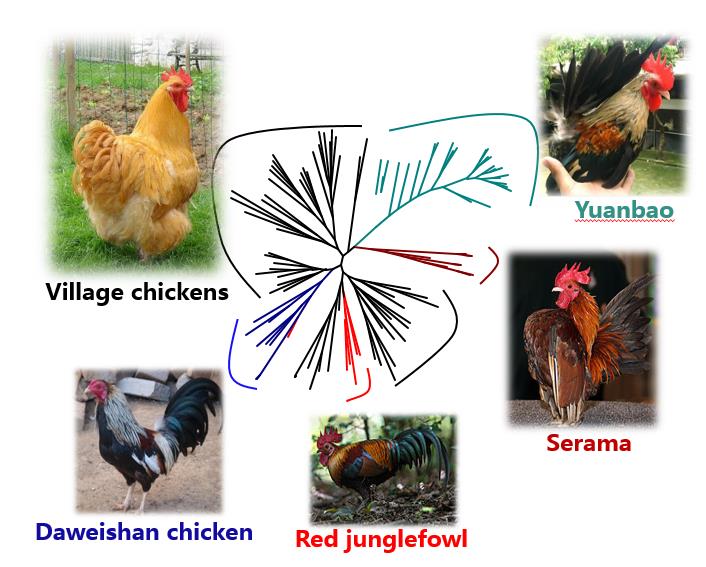Over the years, human have imposed strong artificial selective pressure on chicken through breeding, leading to chicken varieties displaying a myriad of phenotypes.
With regard to body size, the broiler or game fowl (>5Kg) could be 10 times heavier than ornamental chickens (<500g). Being an important economic trait, body size is a hot topic among breeders and scholars alike. Dwarfism trait has been keenly pursued for breeding layer hens and ornamental chickens.
To synergize these breeding efforts, researchers have traditionally exploited QTL (qualitative trait locus) approach to identifying genes underlying body size phenotypes. Unfortunately, this method takes a long time and is very costly, and cannot pinpoint with precision the causative genes for from the large genomic regions suspected to be linked with a particular trait.
With the advent of NGS (next generation sequencing) techniques that allow for large-scale and in-depth genomic assessments, researchers at Kunming institute of Zoology, Chinese Academy of Sciences (KIZ, CAS) have been carrying out comparative population genomic studies whole genome sequencing to uncover the genetic basis for chicken body size variation.
In a research targeting a famous Chinese ornamental chicken called Yuanbao chicken due to its extremely small size, the researchers discovered that BMP10 gene located in chromosome 22 is subjected to strong artificial selection and its expression is up-regulated in Yuanbao chicken’s heart, owing to mutations in the promoter regions of the gene.
This research showed that modifications of BMP10 gene occurring in Yuanbao chicken could explain up to 22.41% of their body size difference with ordinary chicken. This makes BMP10 be the major the target gene determining dwarfism in Yuanbao chicken. This study also attested to the importance of NGS based comparative population genomics approach for identifying major genes for complex traits.
Interestingly, there are many dwarf chicken’s breeds that have emerged from different locations at different times, whether they share a common genetic mechanism body size variation is a question that could not settled at the initial step of the research accomplished at KIZ, CAS.
Therefore these researchers further sampled the world’s smallest chicken, commonly known as Serama, and another Chinese dwarf breed, Daweishan chicken to advance their research. From comparative population genomic assessments of the three famous dwarf chicken breeds, Yuanbao, Serama, and Daweishan, they observed distinct genetic backgrounds for the dwarf chickens.
Demographic history analysis suggested that both Yuanbao and Serama experienced strong bottlenecks during breeding. Selective sweep analyses accompanied by data simulations pointed to two genes, POU1F1 and IGF1, as primary target genes underlying the small body size of Serama.
Considering that Serama harbors both Malaysian and Japanese bantam ancestry, and they possess a large number of PSGs involved in growth and development, these researchers suggested a likely heterotic combination of parental gene networks to produce the smallest chicken breed within a brief period of time. Their research further demonstrated that the three dwarf chicken breeds exhibit parallel genetic mechanisms for small body size development.
This research discovered and identified dwarfism genes represent a substantial milestone for research in evolutionary biology and breeding for body size.
The recent findings have been published in Molecular Biology and Evolution (https://doi.org/10.1093/molbev/msx227), in which WANG Mingshan, Newton O. Otecko, WANG Sheng , and WU Dongdong shared the first-authorship, while both ZHANG Yaping and PENG Minsheng are corresponding authors.
This work was supported by the Strategic Priority Research Program of the Chinese Academy of Sciences (Grant No XDB13020600), the 973 program (2013CB835200, 2013CB835204), the National Natural Science Foundation of China (31321002, 31271339), and the Youth Innovation Promotion Association, Chinese Academy of Sciences.

Different chicken body size variation (Image by WANG Mingshan)
(By WANG Mingshan; Editor: HE Linxi)
Contact:
HE Linxi
helinxi@mail.kiz.ac.cn
